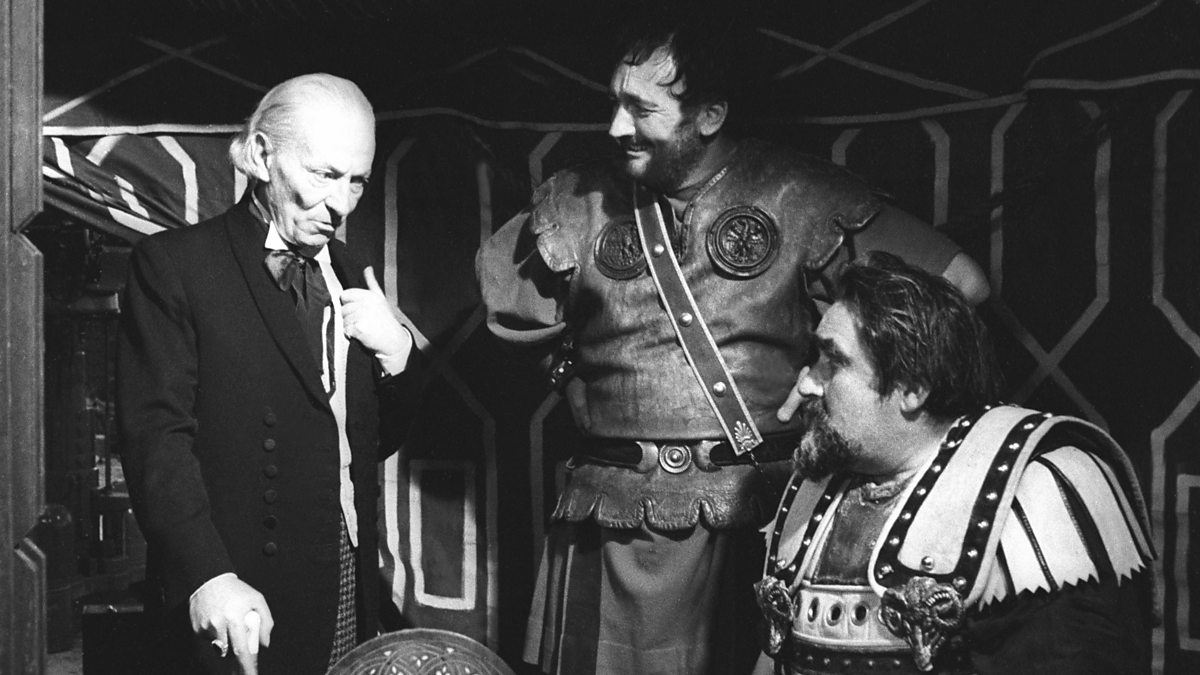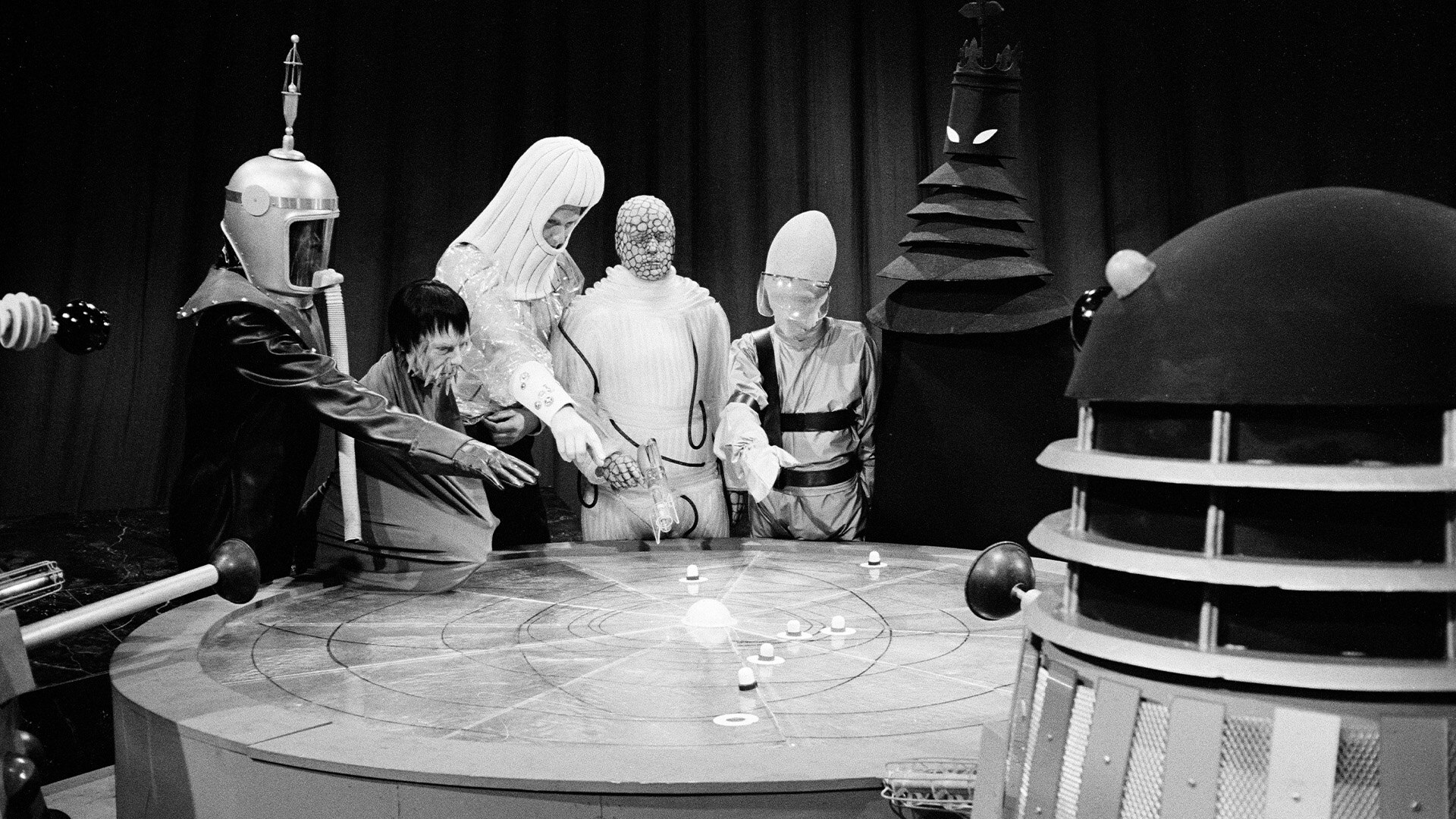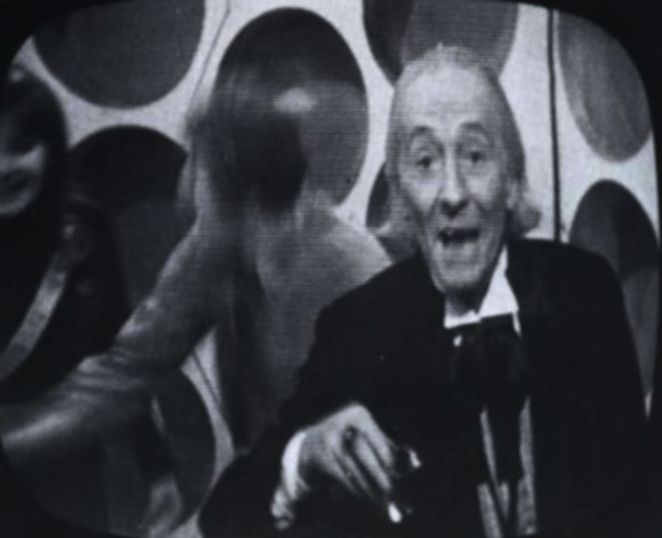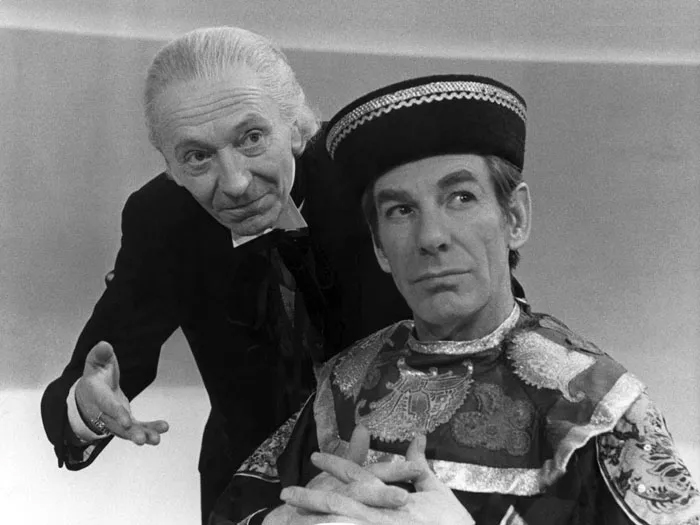Doctor Who Season 3 came at a time of great change for the programme, and was not afraid to take risks – even if that meant getting rid of the Doctor…

Doctor Who Season 3 saw the first transition of producers in Doctor Who‘s history, with the original overseer Verity Lambert (who had been instrumental in shaping the programme) passing the baton to the new producer John Wiles. This transition happened gradually, though, and there was some overlap between the two; John Wiles officially took control from the first episode of ‘The Myth Makers,’ although he had been phased in prior to this, and actually produced the previous episode ‘Mission to the Unknown’ despite Verity Lambert receiving the on-screen credit.
It took a while, therefore, for John Wiles’ bold new vision for Doctor Who Season 3 to become a reality, although that is not to say that there was no innovation prior his arrival. Indeed, Lambert’s commissioning of the aforementioned ‘Mission to the Unknown’ was a brave move. This was a mini story that didn’t feature any of the regular cast members and acted as something of a 25 minute prelude to the 12 part ‘Daleks’ Master Plan‘ serial which would follow a few weeks later.

Interestingly, these plans were not ones that John Wiles and his story editor Donald Tosh were overly excited about, and they were frustrated about having a lenghty Dalek story eating up so much of the season. And to date, it is the single longest Doctor Who story of all time; ‘The Trial of a Time Lord’ is a longer, but one could argue that this is more of an anthology than a single tale. And whilst the Daleks were undoubtedly popular, there was no guarantee that the audience would have the appetite for such a gargantuan story unfolding over a three month period.
Interestingly, ‘The Daleks’ Master Plan’ is widely regarded as a classic by modern day fans, and many cite this adventure as their favourite of the William Hartnell era. Certainly, the tale doesn’t pull any punches, and even has the guile to kill off one of its main characters (the companion Katarina) midway through episode four.
And then there is the seventh, festive episode ‘The Feast of Steven‘ – the first episode of Doctor Who ever to be shown on Christmas Day. This is something of a comedic interlude in the midst of the SF grittiness, and doesn’t even feature the Daleks. To say that it was unconventional would be an understatement, and the episode even has the Doctor breaking the fourth wall to wish the audience a merry Christmas.

And as much as this part of Doctor Who Season 3 is appreciated in hindsight, it wasn’t overwhelmingly popular with the audience of the time. Certainly, ‘The Daleks’ Master Plan’ performed well, maintaining Doctor Who Season 3’s streak of 8-9 million viewers per episode. And whilst the first episode of the following story ‘The Massacre‘ saw a solid 8 million people tuning in, the viewing figures slumped to an all-time low of 5.8 million for episode four, and it took a long time for these numbers to recover.
So was ‘The Massacre’ an innovation too far? Possibly. After all, it’s hard to ignore such a sharp drop in Doctor Who Season 3’s viewing figures, which suggest that the story (which unpacked an obscure historical event from 16th century France) wasn’t really to everyone’s taste. It dealt with bleak subject matter, after all, and perhaps the audience had been hoping for something a bit lighter after the intensity of ‘The Daleks’ Master Plan.’
Or perhaps it was the fact that the Doctor was absent for most of the story. This was another of Doctor Who Season 3’s bold moves – to remove the Doctor from ‘The Massacre’ and replace him with the mysterious Abbot of Amboise. This was a character who had the same face as the eponymous hero, leading audiences to wonder whether he was really the Doctor in disguise.
And if he was, did the Doctor Who Season 3 production team really have the audacity to kill him off? Because the Abbot character is executed in the third episode of ‘The Massacre,’ with audiences still unsure as to his true identity.
And whilst it may seem crazy to think that the Doctor Who Season 3 production team would be so bold as to kill off the Doctor, this was something that John Wiles was actively considering – or at least, the termination of William Hartnell’s version of the Doctor. Indeed, these plans nearly came to fruition in one of Doctor Who Season 3’s later stories ‘The Celestial Toymaker,’ in which the Doctor is made invisible by the eponymous villain. The original intention had been for William Hartnell to be removed from the cast during this adventure, with the Doctor re-emerging in episode four with a brand new face.
As we all know, this idea wouldn’t be properly implemented until the later story ‘The Tenth Planet,’ but it had its genesis in the mind of Doctor Who Season 3’s producer John Wiles. He and Hartnell famously clashed, and the tension between the two had resulted in an untenable work environment. But at the same time, Hartnell’s failing health had made it increasingly difficult for him to keep up with the demands of playing the Doctor, and so it was clear that a long-term solution would have to be found if the programme was to continue.

Interestingly, William Hartnell ultimately outlasted Doctor Who Season 3’s producer John Wiles, and by the time the season ended he had been succeeded by Innes Lloyd. Doctor Who Season 3, therefore, has the unusual accolade of being the only season of Doctor Who to be overseen by three separate producers who, between them, oversaw a mammoth 45 episodes.
As such, Doctor Who Season 3 represents a rocky and uncertain period in the show’s history, but it certainly didn’t rest on its laurels. From epic, three-month long adventures to killing off companions to (nearly) killing off the Doctor to quasi-musical adventures like the overtly comedic ‘The Gunfighters,’ Doctor Who Season 3 is one of the boldest and most tonally-diverse seasons in the history of the programme. And whether you love it or hate it, one thing is certain: it is far from dull.
How do you feel about Doctor Who Season 3? And which is your favourite story from this long and varied series? Let me know in the comments below.









I think Season 3 was a case of “necessity is the mother of invention” and they had just as many plates spinning in the air as Terrance Dicks did at the end of Season 6. There is nothing wrong with the writing of ‘The Massacre’, on the contrary, it is just that pseudo-historicals were becoming more popular and viewers didn’t need more grim viewing after the bleak end of Masterplan. You can see that lots of ideas were being thrown into the air and they wanted to see what landed well. Possibly a case of too many cooks (or producers) and a far cry from a single producer’s ‘Masterplan’ of the later seasons (where one individual chose the costume, companion, cast, etc).
I was a kid at the time and watched the programme. If only I had a Tardis!
What is rarely mentioned is how “The Savages” solidifies the characterization and motivation of the Doctor. Before this story, the Doctor really only combats evildoers out of necessity – they are threatening him and his companions. “The Savages” sees him flat out identify an injustice and start working to stop it, before being put in any danger.